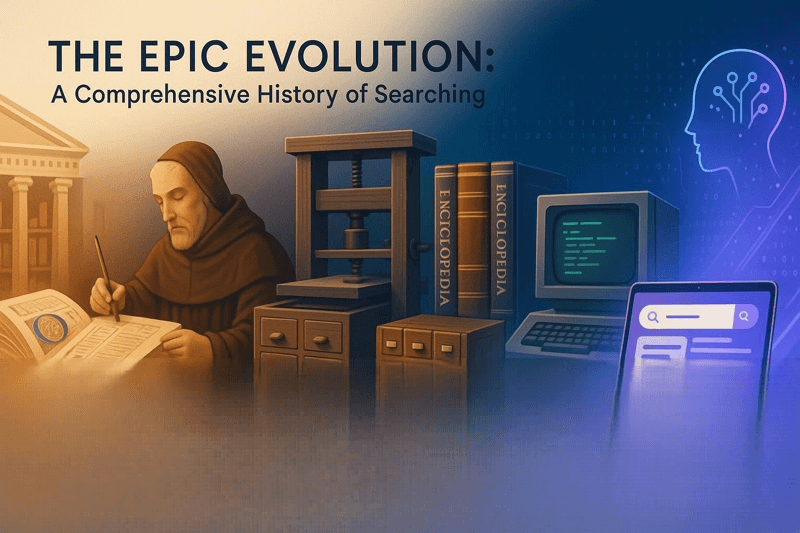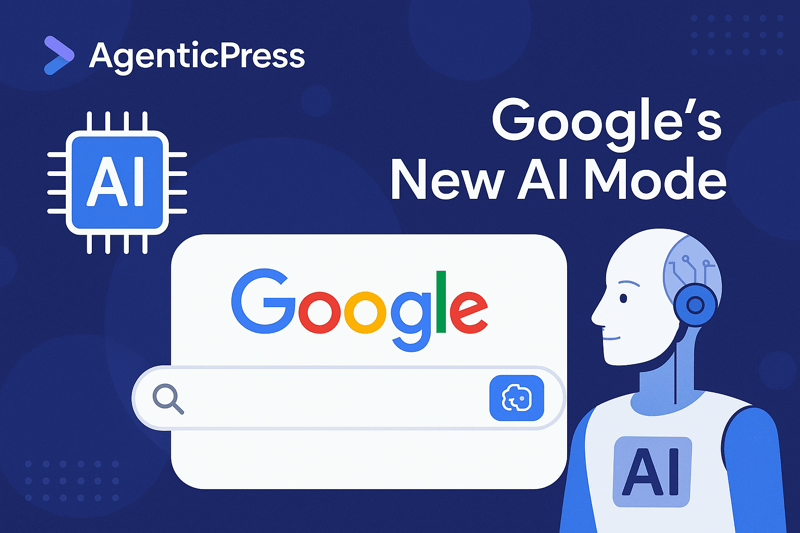The Epic Evolution: A Comprehensive History of Searching
The quest for knowledge has been a fundamental human pursuit since the dawn of civilization. From ancient libraries to modern search engines, the history of searching reflects our evolving relationship with information. This journey through time reveals how our methods of finding, accessing, and organizing knowledge have transformed, shaping societies and expanding human potential.
The Ancient Foundations of Information Retrieval
Before digital technologies, humans developed sophisticated systems to organize and retrieve information. The journey began with our earliest civilizations, where the need to record and access knowledge became essential for survival and advancement.
The First Libraries and Knowledge Repositories
The Library of Alexandria, established in the 3rd century BCE, represents one of humanity’s first grand attempts at comprehensive knowledge collection and organization. With an estimated collection of 400,000 scrolls, the library faced a fundamental challenge: efficiently locating specific information within its vast holdings.
Librarians at Alexandria pioneered early cataloging systems, organizing works by subject areas and creating what might be considered the world’s first searchable database. Callimachus, the poet and scholar, developed the “Pinakes”, which was a 120-volume catalog that categorized works by subject and author, establishing the foundation for a bibliographic organization that would influence information systems for millennia.
Similar developments occurred independently across cultures. In China, the imperial libraries of the Han Dynasty implemented classification systems for their bamboo and silk manuscripts. In contrast, in medieval Islamic libraries, works were meticulously categorized by subject matter, creating efficient retrieval systems long before the age of computation.
Medieval Innovations in Information Organization
The medieval period saw significant advancements in text organization that enhanced searchability. Monks painstakingly created concordances of religious texts, essentially alphabetical indexes of important words with references to where they appeared. These early search tools allowed scholars to locate specific passages without reading entire manuscripts.
The invention of page numbers, chapter divisions, and tables of contents, features we take for granted today, revolutionized how people navigated texts. These innovations made targeted information retrieval possible in ways that would have been unimaginable to ancient scholars, who had to unroll entire scrolls to find specific content.
The Print Revolution and the Birth of Modern Search
Johannes Gutenberg’s invention of the printing press around 1440 triggered an information explosion that necessitated more sophisticated search mechanisms.
From Indexes to Reference Works
As printed books proliferated, so did methods for organizing and retrieving their contents. Detailed indexes became standard features in scholarly works, allowing readers to pinpoint specific information without reading entire volumes. Specialized reference works emerged – dictionaries, encyclopedias, and thesauri – each representing a type of pre-compiled search result for common queries.
The Encyclopédie, edited by Denis Diderot and Jean le Rond d’Alembert in 18th-century France, represented a watershed moment in knowledge organization. This ambitious project compiled information on virtually all subjects and implemented a sophisticated cross-referencing system that connected related concepts across different volumes, a precursor to the hyperlinked structure of the modern web.
Libraries as Search Interfaces
Public libraries expanded during the 19th century, democratizing access to information while developing increasingly sophisticated retrieval systems. The Dewey Decimal Classification, created by Melvil Dewey in 1876, and the Library of Congress Classification system provided standardized methods for organizing vast collections, essentially functioning as physical search engines.
The humble card catalog represented another revolutionary technology in the history of searching. These cabinets of index cards, organized by author, title, and subject, allowed library patrons to quickly locate materials within collections containing thousands or millions of items. Each card functioned as a search result, providing metadata about a book and its location within the library.
Early Computing and the Dawn of Digital Search
The transition from physical to digital information retrieval began in the mid-20th century, laying the groundwork for today’s search engines.
Memex and Hypertext: Conceptual Foundations
In 1945, engineer Vannevar Bush published a visionary essay titled “As We May Think” in The Atlantic. Bush described a hypothetical device called the “memex”, a desk-sized machine that would store and retrieve information on microfilm, allowing users to create “trails” connecting related information. This conceptual leap anticipated hypertext, databases, and modern search functionality.
Building on Bush’s ideas, Ted Nelson coined the term “hypertext” in the 1960s, envisioning interconnected digital documents that users could navigate non-linearly. Nelson’s ambitious Project Xanadu never reached completion, but its concepts influenced later developments, including the World Wide Web.
Early Information Retrieval Systems
The first practical digital search systems emerged in the 1960s and 1970s. The MEDLINE database, launched in 1971 by the National Library of Medicine, allowed researchers to search medical literature using Boolean operators (AND, OR, NOT) to combine search terms – a technique still used in advanced searches today.
Dialog, developed by Lockheed Martin in the 1960s, became one of the first commercial online search services. It provided access to specialized databases for industries ranging from chemistry to current events. These early systems required trained operators and were typically charged by the minute, limiting their use to professionals with institutional backing.
Our dedicated page explains how information retrieval systems have evolved.
The Internet Era: Searching the World’s Information
The birth of the internet and the World Wide Web created an unprecedented challenge: how to search an exponentially growing, decentralized information space.
First-Generation Web Search: Directories and Catalogs
When the web was still in its infancy, early search solutions were often manually curated directories. Yahoo!, launched in 1994 by Jerry Yang and David Filo, began as “Jerry and David’s Guide to the World Wide Web”, a hierarchical directory of websites organized by category. Human editors reviewed and categorized sites, creating a browsable structure similar to a library’s classification system.
The Search Engine Revolution
The explosive growth of the web quickly outpaced the ability of human editors to catalog it, necessitating automated approaches. Early search engines like Lycos, launched in 1994, and AltaVista, introduced in 1995, used “web crawlers”, programs that automatically discovered and indexed web pages. These systems allowed users to search the full text of millions of web pages, representing a quantum leap in information retrieval capabilities.
The true revolution in the history of searching came with Google, founded in 1998 by Larry Page and Sergey Brin. Their PageRank algorithm fundamentally transformed web search by ranking pages based on keyword matching and the web’s link structure, using hyperlinks as “votes” of authority and relevance. This approach delivered dramatically more relevant results and helped Google dominate the search market.
Check out our dedicated page on AI Search Optimization analysis for deeper insights into how search engines analyze and index content.
The AI Revolution in Search Technology
The 21st century has seen search technology transformed by artificial intelligence, machine learning, and natural language processing.
From Keywords to Understanding
Early search engines matched keywords; if your search term appeared frequently on a page, that page ranked higher. Modern search has evolved to understand concepts, context, and user intent. Google’s 2013 Hummingbird update represented a significant shift toward semantic search, understanding the meaning behind queries rather than just matching keywords.
RankBrain, introduced in 2015, brought machine learning into Google’s core algorithm, improving the interpretation of never-before-seen queries. Voice search, accelerated by digital assistants like Siri (2011) and Alexa (2014), pushed search engines to understand natural language questions better.
Personalization and Multimodal Search
Modern search engines increasingly personalize results based on location, search history, and device context. This customization provides more relevant results but has raised concerns about filter bubbles and privacy.
Search has also expanded beyond text to embrace multiple formats. Google Images, launched in 2001, revolutionized visual search. Recently, reverse image search has allowed users to search with images instead of words. Google Lens (2017) and similar technologies can identify objects in photos, effectively exploring the physical world through a camera.
The AI Search Era: From Links to Direct Answers
The latest frontier in search history is the emergence of AI-powered systems that don’t just find information but synthesize it into direct answers.
Conversational AI and Direct Answers
Modern search increasingly provides direct answers rather than just links. Featured snippets with boxed answers at the top of Google results appeared in 2014, extracting and highlighting information from web pages.
Large Language Models like ChatGPT and Claude represent a paradigm shift in search behavior. Rather than providing links, these systems generate original responses synthesized from their training data, offering conversational interactions that more closely resemble human-to-human information exchange.
AI Search Optimization (AISO)
This evolution has profound implications for how information is discovered and accessed. Traditional SEO is focused on appearing in lists of blue links; AI search optimization ensures content is comprehensible to AI systems that generate direct answers. This requires structured content, clear entity relationships, and comprehensive coverage of topics.
Discover how our AISO Analyzer can help your WordPress site achieve visibility in this new era of search.
The Future of Search: What Lies Ahead
The history of searching continues to unfold as new technologies emerge and user expectations evolve.
Multimodal and Ambient Search
Future search systems will become increasingly multimodal, seamlessly integrating text, voice, image, and video queries. Google’s MUM (Multitask Unified Model) represents a step in this direction, understanding and generating content across different formats and languages.
Ambient computing – where search becomes integrated into our environment rather than isolated to screens – represents another frontier. Smart homes, wearables, and augmented reality devices may make search ubiquitous and contextual, anticipating needs before we explicitly formulate queries.
Human-AI Collaboration in Information Seeking
Perhaps the most intriguing development is the evolution toward collaborative search, where AI systems work alongside humans as research partners rather than just tools. These systems might suggest new avenues of exploration, synthesize information from diverse sources, and help users evaluate reliability and bias.
Conclusion: The Continuing Quest
The history of searching reflects our fundamental human drive to organize, access, and understand the world’s information. Each innovation, from ancient library cataloging systems to AI-powered question answering, has expanded our capacity to find and use knowledge.
As search technologies evolve, the core challenge remains: connecting people with the information they need. The most successful search tools, whether scrolls, card catalogs, or AI systems, have always been those that best understand and serve human information needs.
Effective search is more valuable than ever in an age of information abundance. Understanding the history of searching helps us appreciate how far we’ve come and imagine where we might go in our epic quest for knowledge. What search technologies do you think will emerge in the coming decades? Please share your thoughts in the comments below, and learn more about how AI is changing search behavior on our blog.

